Kythnos churches and village
Before leaving Kythnos, Kathy and Chris took me to see a couple of churches and one of the villages on the west side of the island. The churches tended to be small and modest, which I prefer over the gaudy (Gaudí?) churches usually seen in Western Europe.
The first church we visited is called Panagia Stratolatissa. Chris thinks the correct translation into English is “Virgin Who Walks” rather than the alternate translation of “Virgin with an Army”.
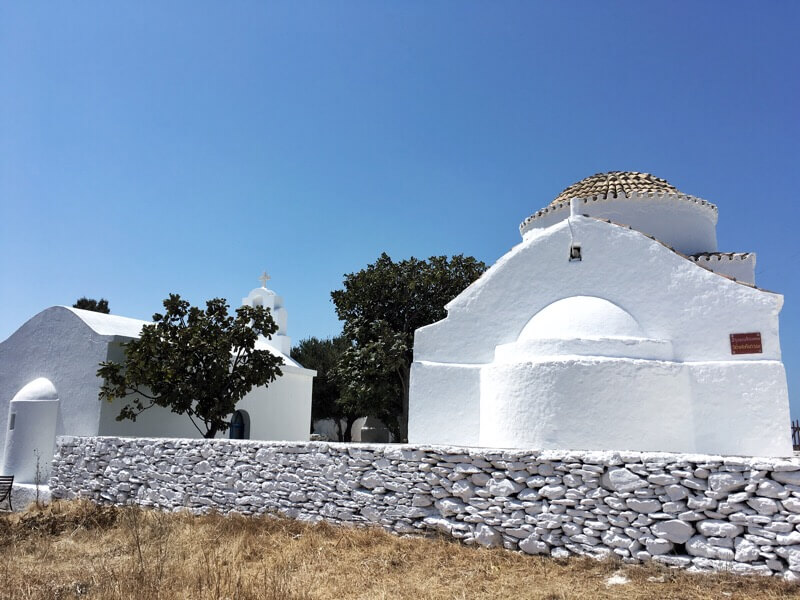
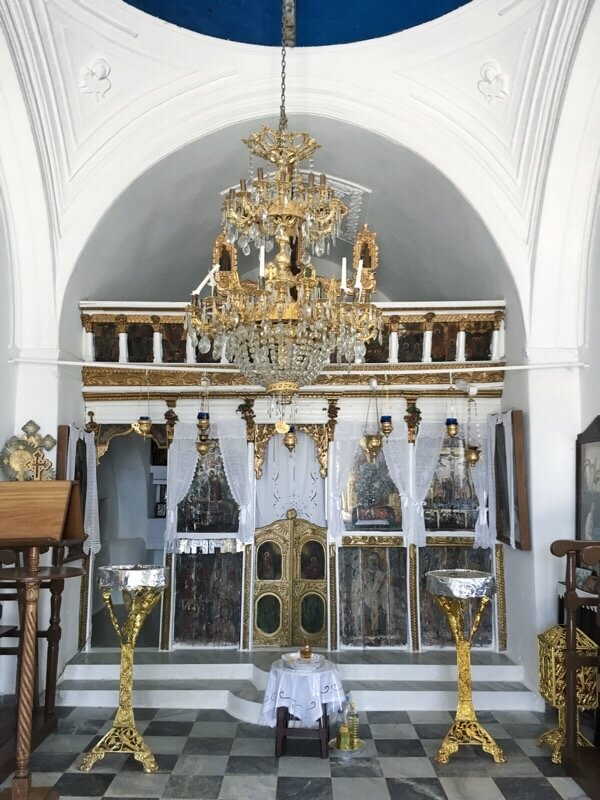
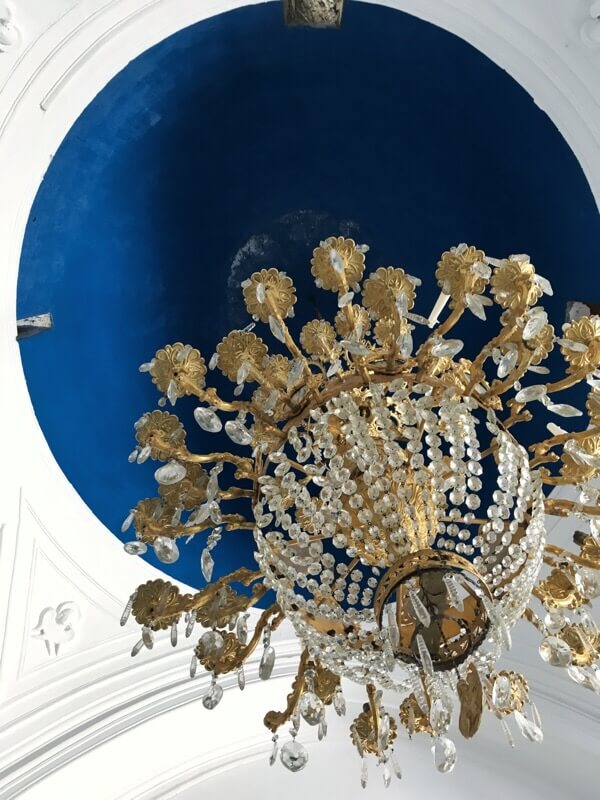
The church had recently celebrated Virgin Mary’s feast day on 15 August, so the white outline paintings had been freshly renewed.
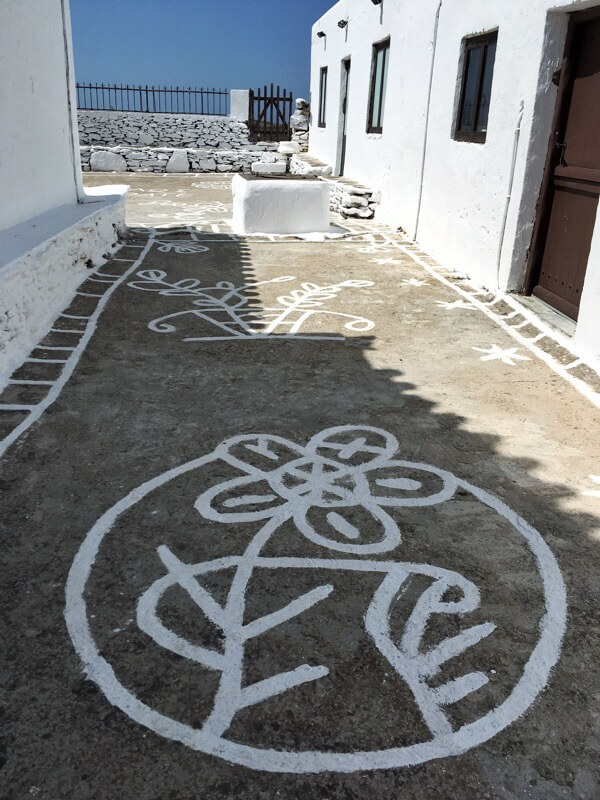
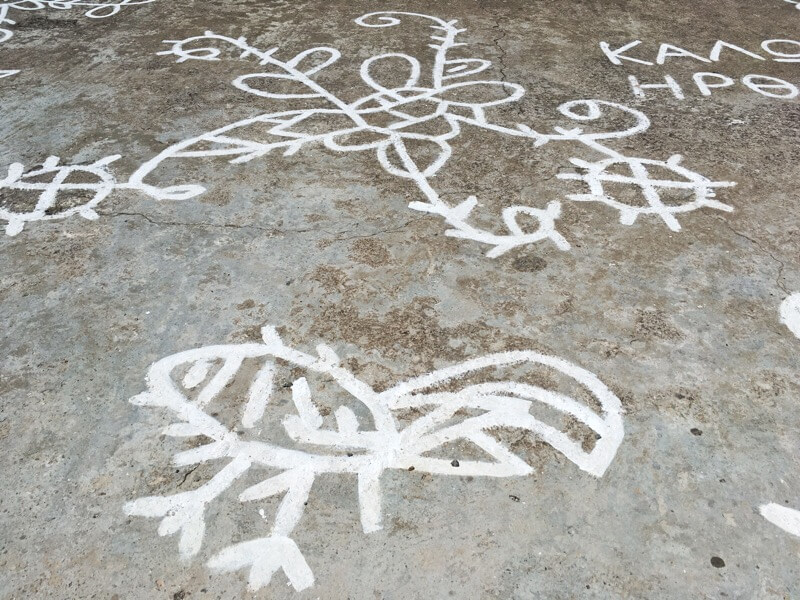
The second church we looked at was Agios Konstatinos. Its view of the desert landscape of Kythnos is panoramic. By the road, they’ve outlined imaginary blocks on the shoulder.
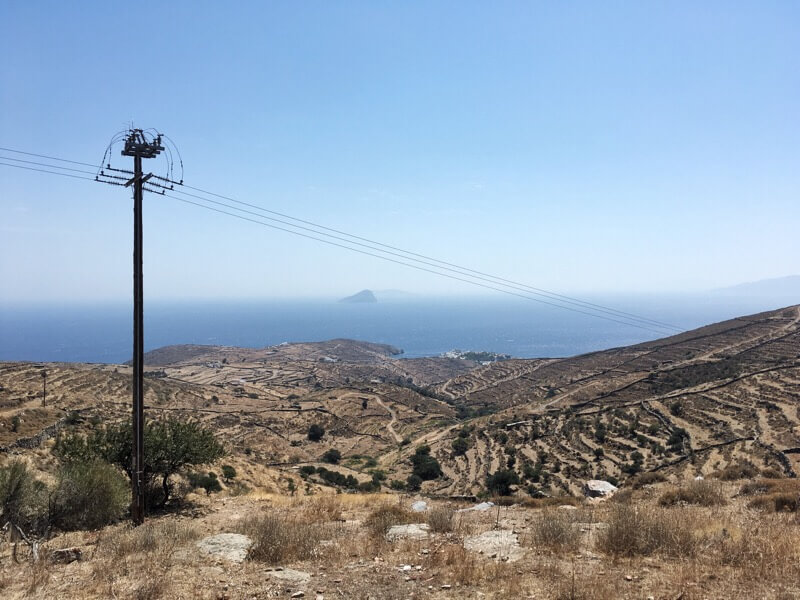
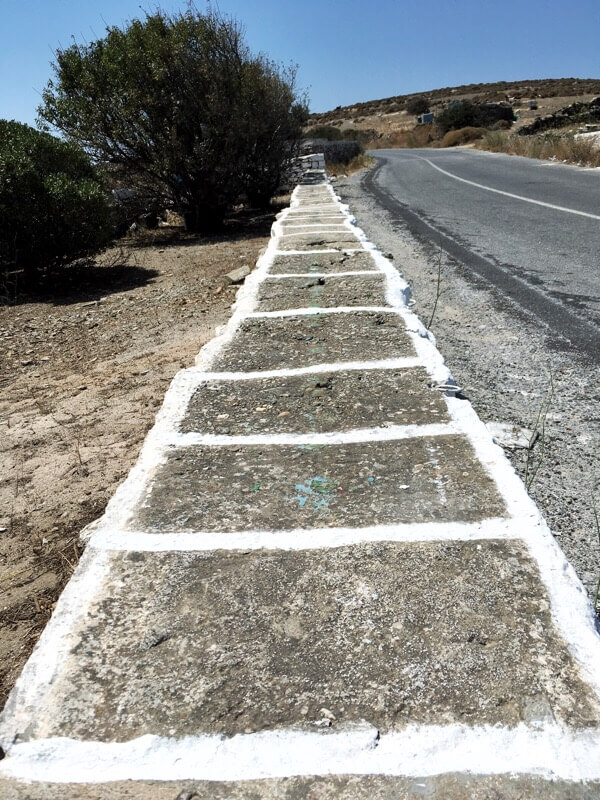
This church is smaller than Panagia Statolatissa, but it’s quite charming, too. Its chandelier features a double-headed eagle, and you can see traditional crocheted curtains in the windows.
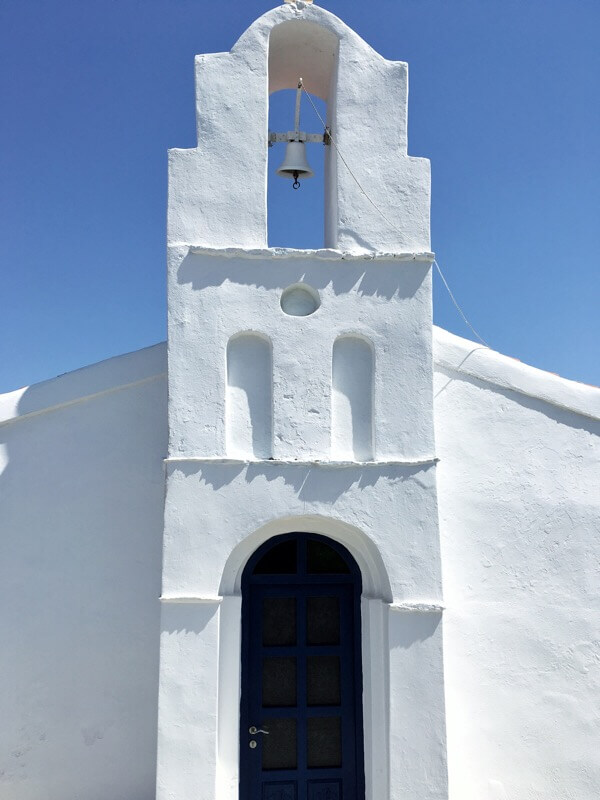
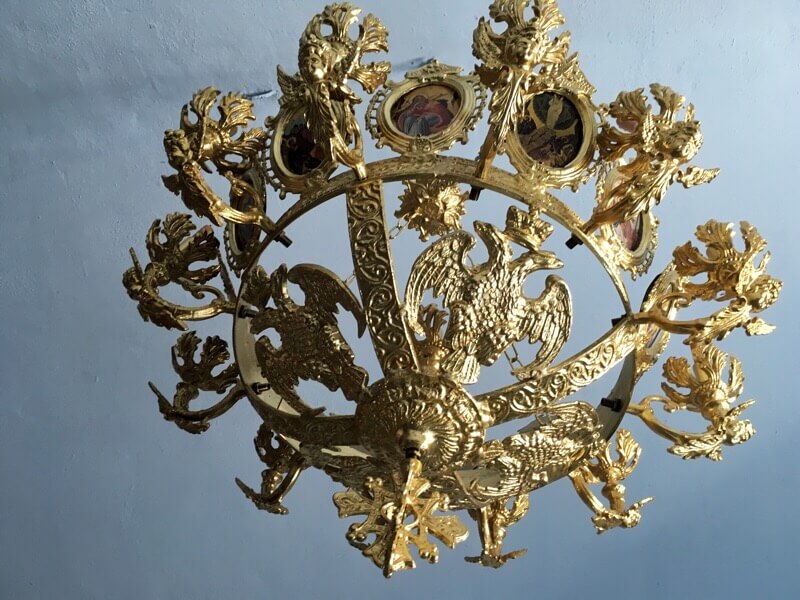
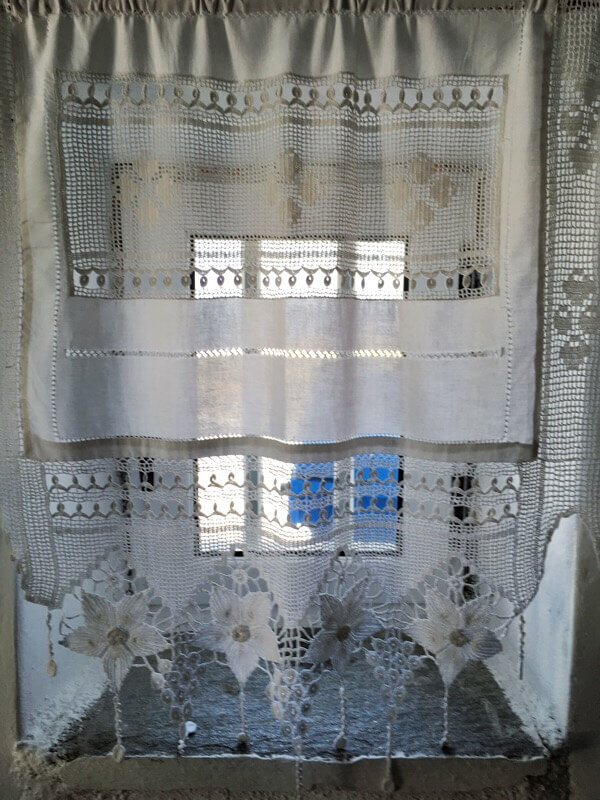
Our final stop before heading to the port was the village Dryopida, named after the Dryopes, who were the first settlers of Kythnos.
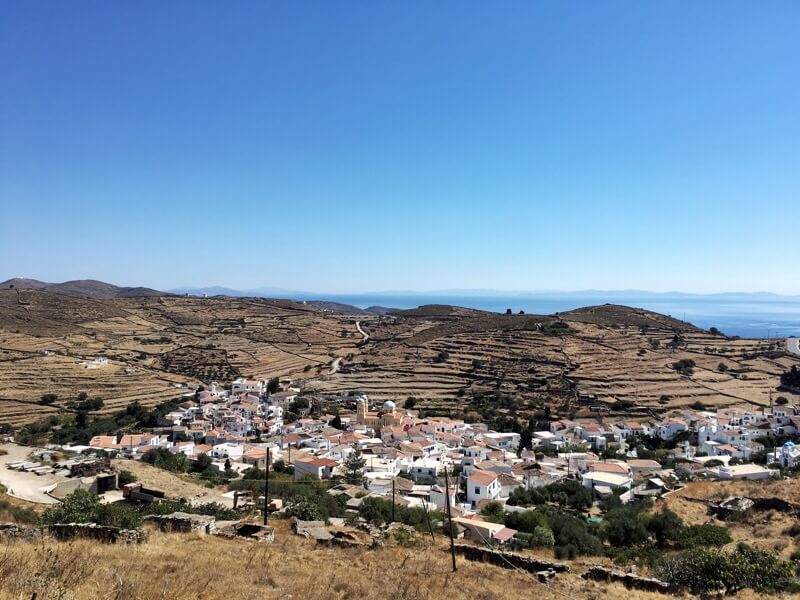
It is different from other Greek villages in that they have sloped roofs rather than flat ones.
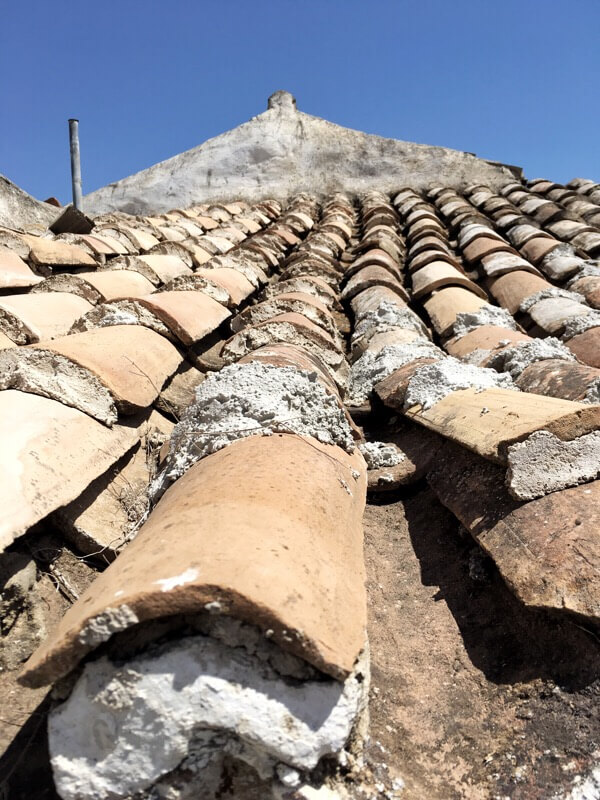
Cars can’t fit in the narrow passageways. The best way to navigate the village is on foot. You’ll also see white outlines painted around groupings of flat stones on the ground. Kathy told me that they were historically used to increase visibility of the walkways since there wasn’t any electricity to power street lamps at night.
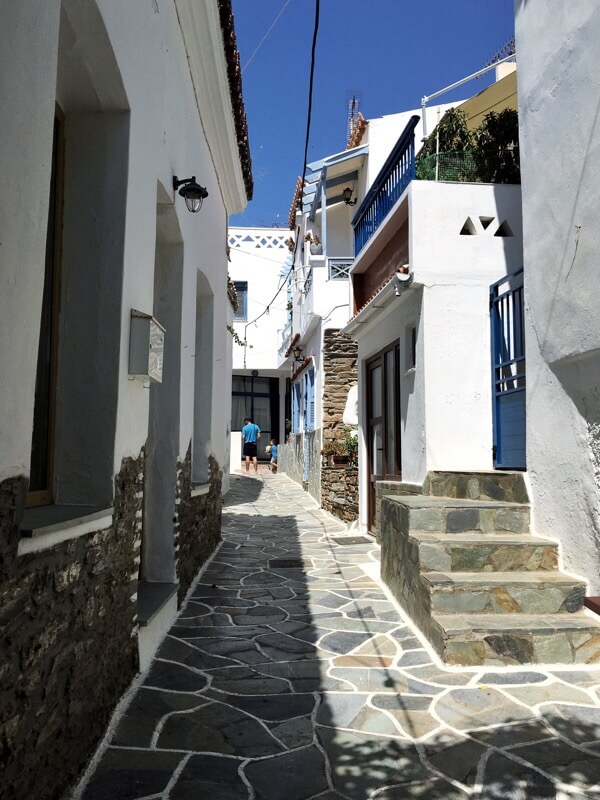
But you’ll still see the white outlined paintings in various places.
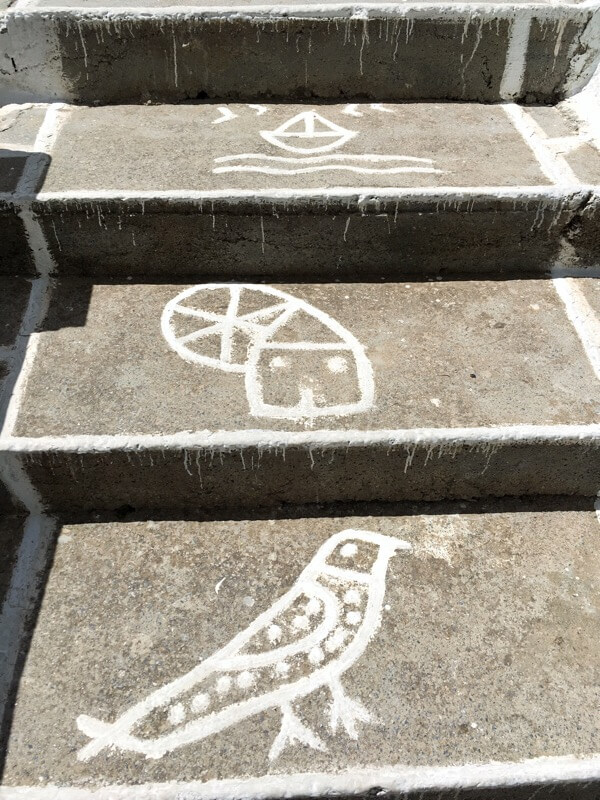
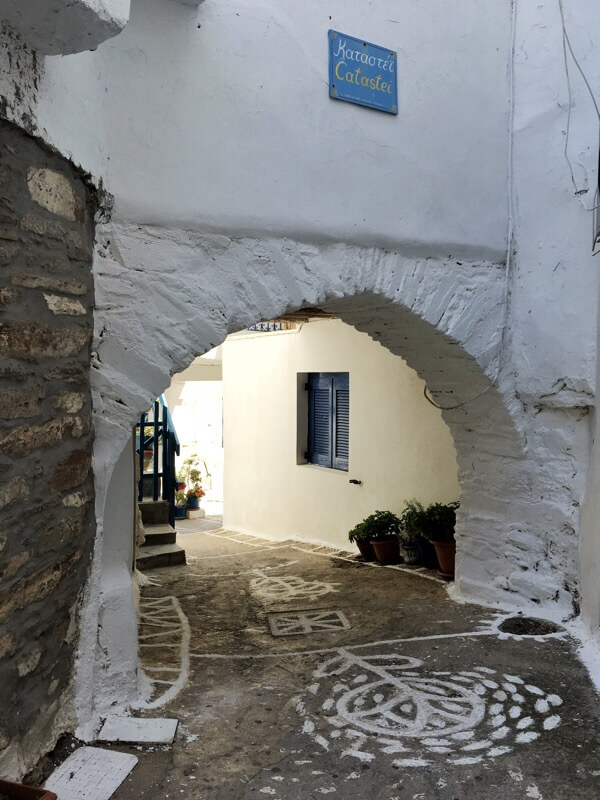
Certain plants seem to grow here quite nicely despite the hot weather.
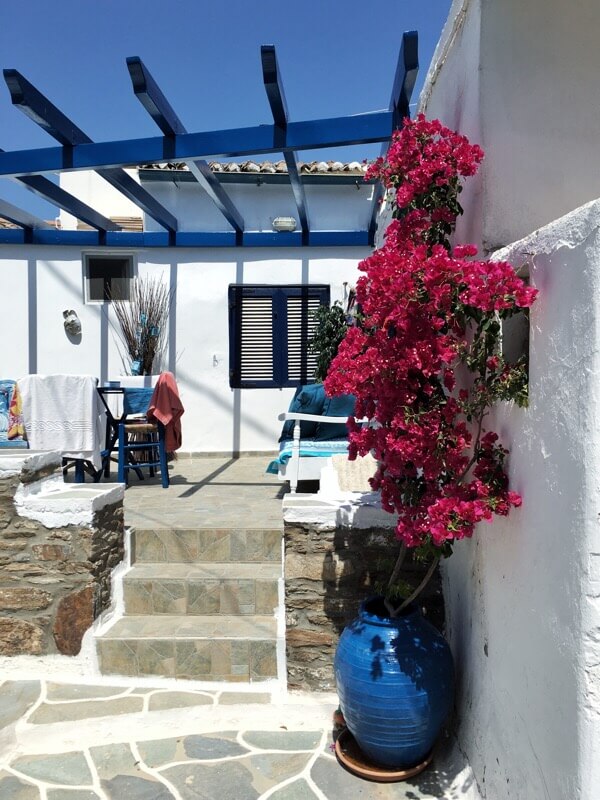
This series of staircases reminded me of M. C. Escher.
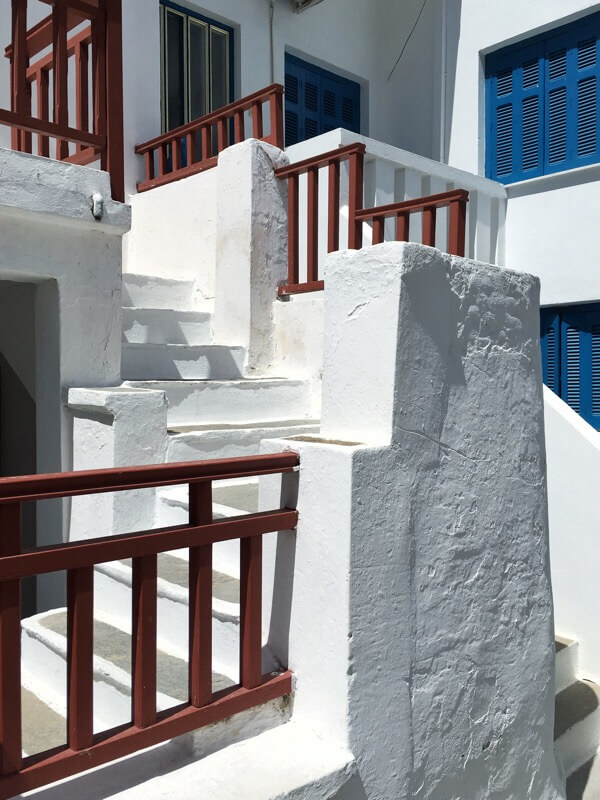
If you look, you’ll see little details, such as this little blue window and what is used in doorways instead of screens.
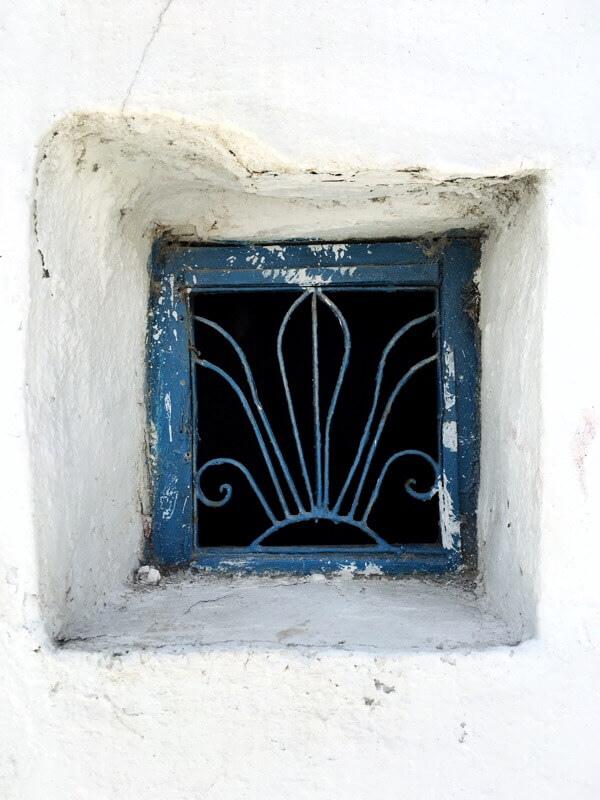
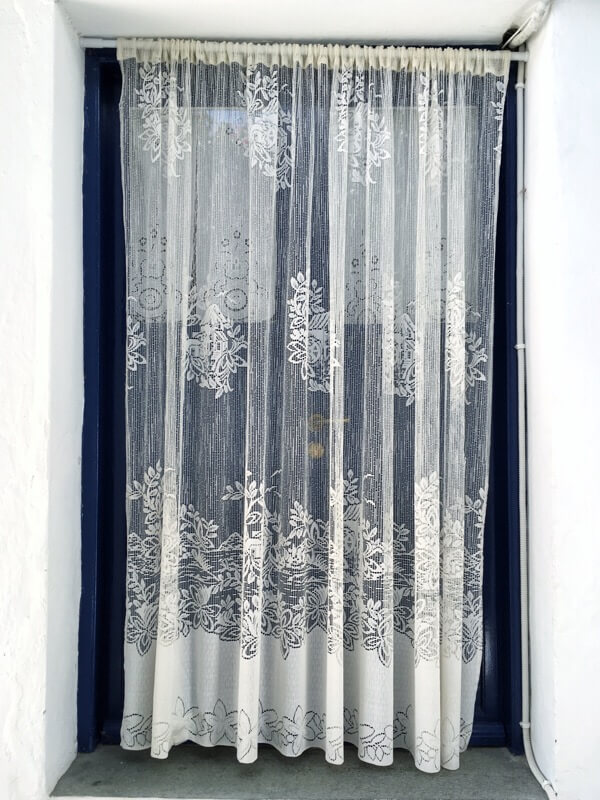
What a lovely village! I didn’t have time, but there’s also a cave called Katafyki that you can tour: it was used as a place of refuge for the residents starting when pirates sailed the Aegean Sea.